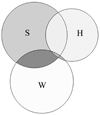Diversity and population structure of sewage-derived microorganisms in wastewater treatment plant influent
- PMID: 19840106
- PMCID: PMC2868101
- DOI: 10.1111/j.1462-2920.2009.02075.x
Diversity and population structure of sewage-derived microorganisms in wastewater treatment plant influent
Erratum in
- Environ Microbiol. 2010 May;12(5):1376
Abstract
The release of untreated sewage introduces non-indigenous microbial populations of uncertain composition into surface waters. We used massively parallel 454 pyrosequencing of hypervariable regions in rRNA genes to profile microbial communities from eight untreated sewage influent samples of two wastewater treatment plants (WWTPs) in metropolitan Milwaukee. The sewage profiles included a discernible human faecal signature made up of several taxonomic groups including multiple Bifidobacteriaceae, Coriobacteriaceae, Bacteroidaceae, Lachnospiraceae and Ruminococcaceae genera. The faecal signature made up a small fraction of the taxa present in sewage but the relative abundance of these sequence tags mirrored the population structures of human faecal samples. These genera were much more prevalent in the sewage influent than standard indicators species. High-abundance sequences from taxonomic groups within the Beta- and Gammaproteobacteria dominated the sewage samples but occurred at very low levels in faecal and surface water samples, suggesting that these organisms proliferate within the sewer system. Samples from Jones Island (JI--servicing residential plus a combined sewer system) and South Shore (SS--servicing a residential area) WWTPs had very consistent community profiles, with greater similarity between WWTPs on a given collection day than the same plant collected on different days. Rainfall increased influent flows at SS and JI WWTPs, and this corresponded to greater diversity in the community at both plants. Overall, the sewer system appears to be a defined environment with both infiltration of rainwater and stormwater inputs modulating community composition. Microbial sewage communities represent a combination of inputs from human faecal microbes and enrichment of specific microbes from the environment to form a unique population structure.
Figures





References
Publication types
MeSH terms
Substances
Grants and funding
LinkOut - more resources
Full Text Sources

